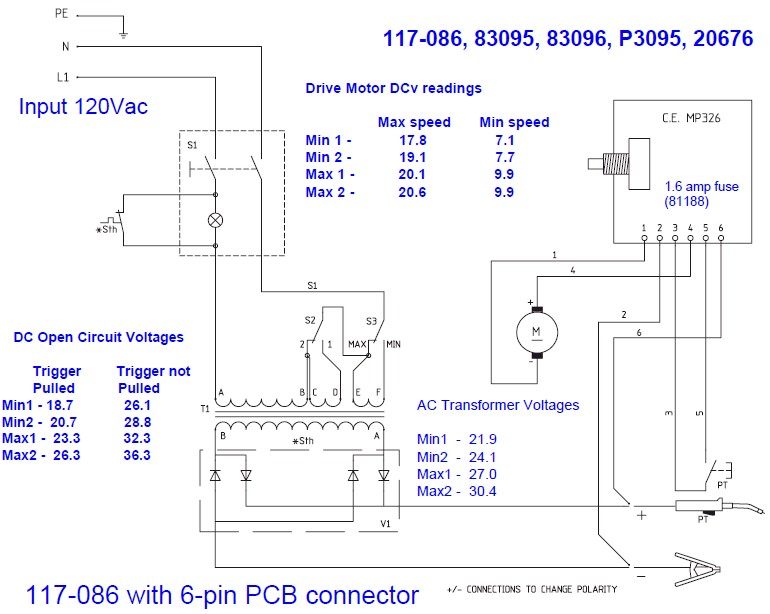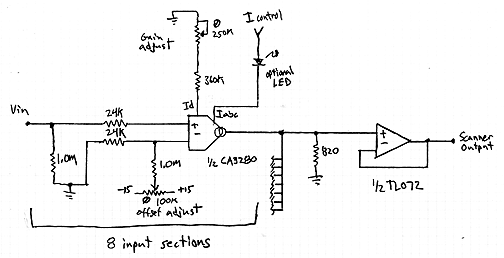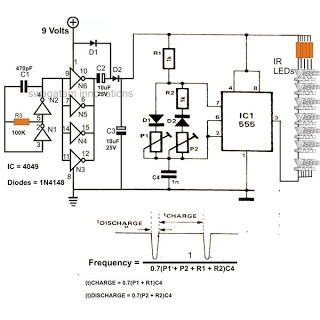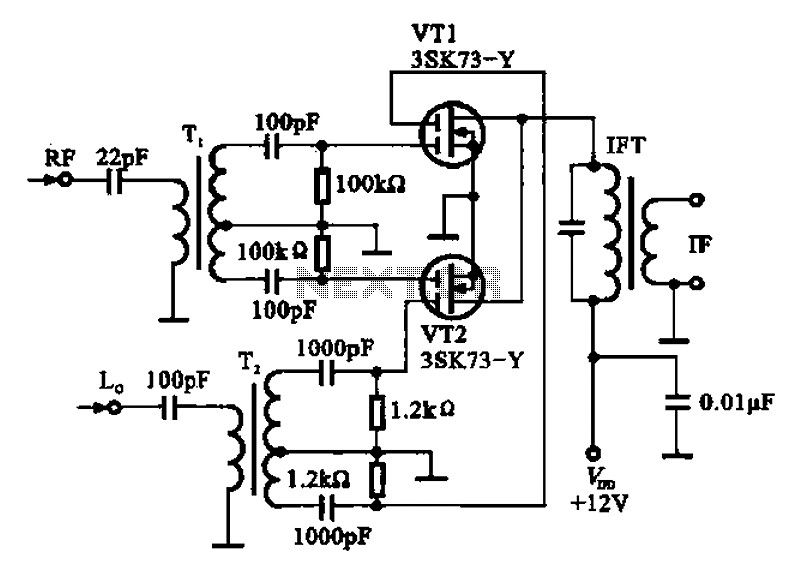
Solar Panel AC Mains Relay Changeover Circuit

The automatic changeover relay circuit was requested by Mr. Karimulla Baig. The circuit is designed to charge a connected battery at a constant current using power from a solar panel. In the absence of solar energy, such as during nighttime, the circuit switches to utilize DC power from an AC/DC adapter. Mr. Baig has requested assistance in designing a changeover circuit that combines both the AC mains charger and the solar charger. The proposed circuit diagram includes three main components: on the left, an IC 741 operational amplifier; in the center, a voltage regulator stage using an LM317 integrated circuit; and at the top, an AC/DC adapter circuit. The LM317 is configured to generate a constant current output of 7 volts for charging the 6V battery connected at specified points. When the voltage from the solar panel drops below 7 volts, the relay deactivates, allowing the DC adapter to provide power to the regulator circuit, thereby charging the battery through the AC/DC adapter.
The automatic changeover relay circuit described operates by seamlessly switching between two power sources to ensure consistent battery charging. The circuit is primarily composed of an operational amplifier (IC 741), which is used to monitor the voltage levels from the solar panel. The operational amplifier serves as a comparator, determining when the solar panel output is insufficient for charging the battery.
The central component of the circuit is the LM317 voltage regulator, which is configured to maintain a constant output voltage of 7 volts. This output is critical for charging the 6V battery efficiently. The LM317 is connected in such a way that it can provide a steady current, crucial for the longevity and performance of the battery.
When the solar panel output falls below the threshold of 7 volts, the relay is activated, disconnecting the solar panel and connecting the AC/DC adapter to the LM317. This transition is essential for maintaining battery charge during periods of low solar energy, such as at night or during cloudy weather. The AC/DC adapter ensures that the battery continues to receive power, preventing discharge and maintaining its charge state.
The relay used in the circuit is typically a double-pole double-throw (DPDT) type, which allows for the switching of both the solar panel and the AC adapter connections. This design ensures that only one power source is connected to the battery at any given time, preventing potential damage from simultaneous connections.
Overall, the automatic changeover relay circuit effectively combines renewable energy input with traditional power sources, providing a reliable solution for battery charging in various conditions. The integration of these components ensures that the system is efficient, responsive, and capable of maintaining battery health over extended periods.The discussed automatic change over relay circuit was requested by Mr. Karimulla Baig. The circuit normally charges the connected battery at constant current through the power received from the solar panel, andrevertsto DC power from an AC/DC adapter in the absence of solar energy (during night time). Lets the read the request in more details: i ha ve made the both chargers of both AC mains charger and solar Charger and i need a change over for this kindly help me in designing the change over circuit. Looking at the proposed circuit diagram, we see three basic stages, on the left an IC 741 circuit, at the center a voltage regulator stage using IC LM317, while on the top an AC/DC adapter circuit.
The IC317 circuit is a regulator circuit, configured for generating aconstantcurrent, 7 volts output to the 6V battery which is connected at the given points. However, the moment the panel voltage drops below 7 volts, the relay switches OFF, connecting the DC adapter power with the regulator circuit, and now the batterystartsgetting charged through the AC/DC adapter voltage source.
🔗 External reference
The automatic changeover relay circuit described operates by seamlessly switching between two power sources to ensure consistent battery charging. The circuit is primarily composed of an operational amplifier (IC 741), which is used to monitor the voltage levels from the solar panel. The operational amplifier serves as a comparator, determining when the solar panel output is insufficient for charging the battery.
The central component of the circuit is the LM317 voltage regulator, which is configured to maintain a constant output voltage of 7 volts. This output is critical for charging the 6V battery efficiently. The LM317 is connected in such a way that it can provide a steady current, crucial for the longevity and performance of the battery.
When the solar panel output falls below the threshold of 7 volts, the relay is activated, disconnecting the solar panel and connecting the AC/DC adapter to the LM317. This transition is essential for maintaining battery charge during periods of low solar energy, such as at night or during cloudy weather. The AC/DC adapter ensures that the battery continues to receive power, preventing discharge and maintaining its charge state.
The relay used in the circuit is typically a double-pole double-throw (DPDT) type, which allows for the switching of both the solar panel and the AC adapter connections. This design ensures that only one power source is connected to the battery at any given time, preventing potential damage from simultaneous connections.
Overall, the automatic changeover relay circuit effectively combines renewable energy input with traditional power sources, providing a reliable solution for battery charging in various conditions. The integration of these components ensures that the system is efficient, responsive, and capable of maintaining battery health over extended periods.The discussed automatic change over relay circuit was requested by Mr. Karimulla Baig. The circuit normally charges the connected battery at constant current through the power received from the solar panel, andrevertsto DC power from an AC/DC adapter in the absence of solar energy (during night time). Lets the read the request in more details: i ha ve made the both chargers of both AC mains charger and solar Charger and i need a change over for this kindly help me in designing the change over circuit. Looking at the proposed circuit diagram, we see three basic stages, on the left an IC 741 circuit, at the center a voltage regulator stage using IC LM317, while on the top an AC/DC adapter circuit.
The IC317 circuit is a regulator circuit, configured for generating aconstantcurrent, 7 volts output to the 6V battery which is connected at the given points. However, the moment the panel voltage drops below 7 volts, the relay switches OFF, connecting the DC adapter power with the regulator circuit, and now the batterystartsgetting charged through the AC/DC adapter voltage source.
🔗 External reference





